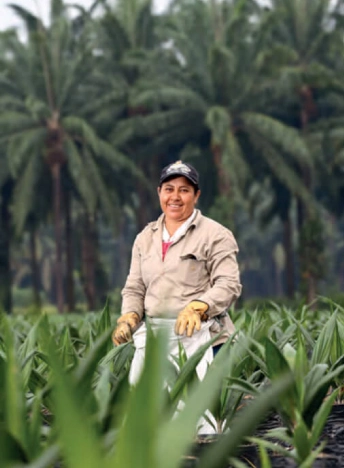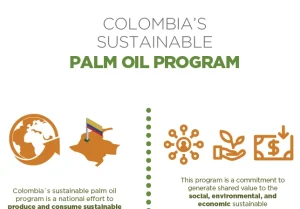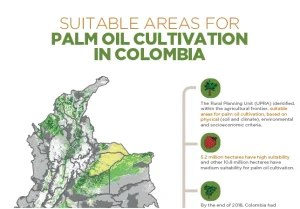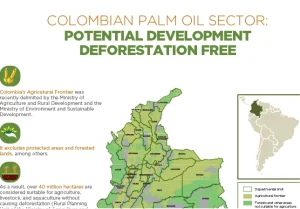
The Colombian palm sector is committed to a deforestation-free development, preserving our biodiversity and in harmony with the natural riches of the palm growing regions.
Colombia is one of the few megadiverse countries in the world. Its forests, jungles, wetlands, páramos, savannahs, rivers, lakes, and other ecosystems host countless species and an unrivaled natural wealth. Our biodiversity is also present in the agricultural sphere, and the productive sectors play a significant role in its conservation.
Therefore, the environmental management of planned projects begins from their conceptualization in order to ensure that the crops and processing plants do not affect protected areas, forests, or other environmentally essential ecosystems, and that the area intended for the project has an adequate environmental supply of water and other natural resources. The design of the palm lots includes identifying the ecosystems and habitats to be maintained as conservation areas as well as the landscape management tools (riparian corridors, conservation corridors, shrubberies, nectar plants, etc.), including natural vegetation into the productive system to provide ecosystem services such as pollination, biological pest and diseases control, formation of soils, and protection of riverbeds.



